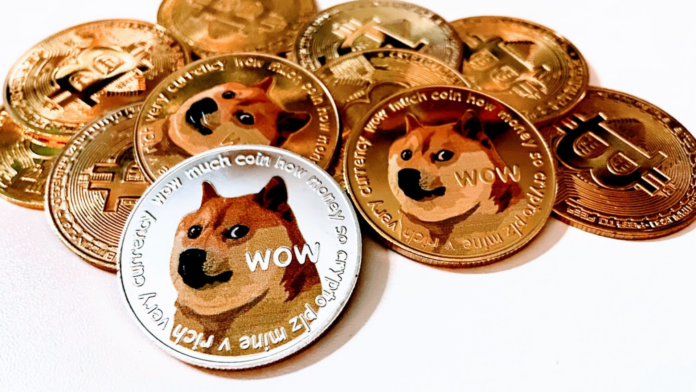Dogecoin (DOGE), originally conceived in 2013 as a lighthearted parody of the burgeoning cryptocurrency movement, has since evolved into a digital asset with a substantial market presence. Its journey from a meme-inspired token to a cryptocurrency with a market capitalization exceeding $50 billion as of January 2025 prompts a critical examination of its future prospects. This article delves into Dogecoin’s historical trajectory, current market performance, adoption trends, technological developments, and expert forecasts to assess its potential trajectory in the coming years.
Historical Overview
Dogecoin was created by software engineers Billy Markus and Jackson Palmer as a satirical response to the proliferation of altcoins. Featuring the Shiba Inu dog from the “Doge” meme as its logo, DOGE quickly garnered a dedicated community attracted to its playful branding and philanthropic endeavors. Notable campaigns included fundraising for charitable causes and sponsoring sporting events, which helped cement its reputation as the “fun and friendly” cryptocurrency.

Market Performance and Adoption
Despite its whimsical origins, Dogecoin has experienced significant market activity. In May 2021, DOGE reached an all-time high of approximately $0.73, propelled by social media buzz and endorsements from high-profile individuals like Elon Musk . As of November 19, 2024, Dogecoin was trading at $0.3825, with a market capitalization of $56.39 billion, reflecting a 168.36% increase over the previous month.
The cryptocurrency’s adoption has expanded beyond individual enthusiasts to include institutional interest. In January 2025, Grayscale Investments launched the Grayscale Dogecoin Trust, offering accredited investors exposure to DOGE . This move signifies a growing recognition of Dogecoin as a legitimate asset class within the investment community.
Technological Developments and Regulatory Considerations
Dogecoin operates on a proof-of-work (PoW) consensus mechanism, similar to Bitcoin, but with notable differences, such as a faster block time and an uncapped supply. These characteristics have implications for its scalability and inflationary nature. Discussions within the community and among developers continue regarding potential technological enhancements to improve transaction efficiency and utility.
Regulatory perspectives on Dogecoin remain ambiguous. The U.S. Securities and Exchange Commission (SEC) has considered whether DOGE qualifies as a security, given its reliance on external efforts to drive profit expectations . Conversely, the Commodity Futures Trading Commission (CFTC) may view it as a commodity, akin to other decentralized cryptocurrencies. The establishment of the D.O.G.E. Commission, an advisory body led by figures like Elon Musk and Vivek Ramaswamy, reflects ongoing efforts to navigate the complex regulatory landscape, though this entity holds no formal regulatory authority .
Community Influence and Social Media Dynamics
The Dogecoin community plays a pivotal role in its market dynamics. Social media platforms have been instrumental in mobilizing support and driving price movements. For instance, endorsements from Elon Musk have historically led to significant price surges . However, this reliance on social media influence introduces volatility and raises questions about the sustainability of such growth.

Expert Forecasts and Price Predictions
Analysts and industry experts offer varied projections for Dogecoin’s future value:
-
Finder’s Panel Forecasts: A panel of 26 cryptocurrency specialists surveyed in January 2025 predicted that DOGE would be worth $0.57 by the end of 2025, $2.02 by 2030, and $3.12 by 2035.
-
CoinSurges Analysis: Projections suggest that DOGE could reach a high of $1.07 in 2025, with potential lows around $0.62, depending on market conditions and adoption rates.
-
Cryptopolitan Insights: Predictions indicate a trading range between $0.146 and $0.271 in March 2025, with an average price of $0.228.
These forecasts underscore the uncertainty and speculative nature of Dogecoin’s future valuation.
Potential Challenges and Considerations
While Dogecoin has achieved remarkable milestones, several challenges could impact its future trajectory:
-
Market Volatility: The cryptocurrency market is inherently volatile, and Dogecoin’s price is susceptible to rapid fluctuations influenced by social media trends and public sentiment.
-
Regulatory Uncertainty: Evolving regulatory frameworks could affect Dogecoin’s legality, adoption, and integration into mainstream financial systems.
-
Technological Limitations: Dogecoin’s PoW mechanism and uncapped supply may pose scalability and inflation concerns, necessitating ongoing development and innovation.
-
Competition: The proliferation of alternative cryptocurrencies with advanced functionalities could overshadow Dogecoin’s market position.
Conclusion
Dogecoin’s transformation from a meme-based token to a cryptocurrency with significant market capitalization reflects its unique community-driven appeal and the broader dynamics of the digital asset landscape. While institutional interest and adoption have provided a degree of legitimacy, Dogecoin’s future remains uncertain, influenced by factors such as market volatility, regulatory developments, technological advancements, and competitive pressures. Potential investors should approach Dogecoin with caution, conducting thorough research and considering the inherent risks associated with its speculative nature.




